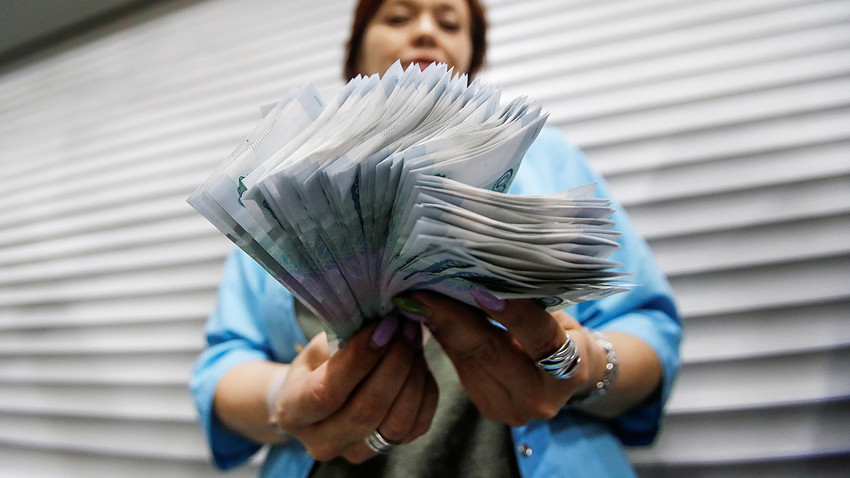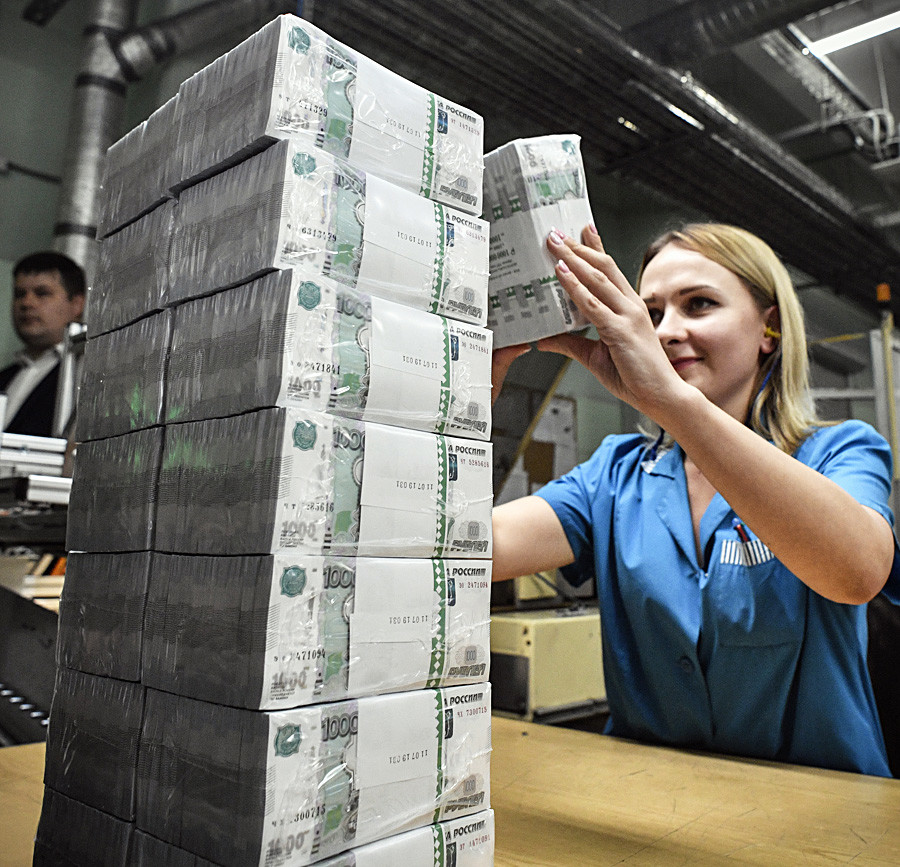Why has Russia cut its debt to ZERO?

Russia’s strive for independence, both politically and economically, seems to have pushed the country to the new level. In response to Western sanctions and the fall of oil prices, authorities set on a course to accumulate reserves to ensure financial stability. As a result of the strict debt discipline, the country’s net public debt has now fallen below zero, reports RBC Daily (link in Russian).
Official statistics show that the Kremlin can now easily pay off all its debts - if it suddenly needed to. As of August 1, the country’s total debt (the state’s external and domestic debts) was 16.2 trillion rubles ($248 billion) or 15 percent of GDP, which is a little less than the amount of cash in Russia’s deposits with the Central Bank and commercial banks - 17.6 trillion ($269 billion) or 16.2 percent of the GDP.
Lower debt than the US or China
These numbers don’t include commercial debt, but even if one does take that into account, the Russian economy still looks better than... the rest of the world! Dealing with the 2008 global financial crisis, many world economies had to borrow heavily to avoid a recession and, according to the IMF, the most indebted economies in the world are also the richer ones.
In 2017, total global debt reached an all-time high of $184 trillion (225 percent of global GDP) or, in per capita terms, $86,000 of debt per person on the planet. The top three borrowers in the world - the U.S. (256 percent of GDP), China (254 percent of GDP), and Japan (395 percent of GDP) - accounted for more than half of global debt, exceeding their share of global output.
“As for Russia, in 2017, its debt was at 84 percent of GDP with 81.5 percent of it being commercial (or privately-owned) debt or, in per capita terms, $897 per person,” says Gaidar Gasanov, expert at the International Financial Center in Moscow. “Russia’s reserves have exceeded $500 billion for the first time this year, which means that the economy can ensure the stability of its national currency in case of new potential risks of sanctions in the future.”

A forced decision?
Yet, such a policy didn’t come without a price, experts say. The result of saving money and not using it to boost economic growth leads to further stagnation, says Sergey Suverov, senior analyst at BKS Premier. “The GDP growth in the first half of 2019 reached only 0.7 percent,” he argues. “This leads to a unique situation which points to a high credit worth of Russian bonds, as well as to a lower attractiveness of investments in Russia. Investors need to see economic development, and there is none.”
At the same time, this money-saving course could have been a forced decision, thinks Anton Bykov, senior analyst at the Center of Analytics and Financial Technologies. “This policy pushed the authorities to cut social expenditures and increase taxes, which didn’t play in favor of authorities’ public ratings,” he says. “What could have pushed the government to proceed with this policy? They probably expect the reduction of state revenues in the future, due to the slowdown of the global economy. And this in a situation when the Western borrowing market is closed.”
If using any of Russia Beyond's content, partly or in full, always provide an active hyperlink to the original material.
Subscribe
to our newsletter!
Get the week's best stories straight to your inbox